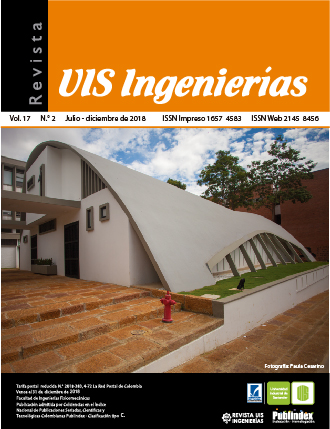Design of a management plan to reduce the biomechanical workload in companies of footwear industry in Valle del Cauca
Published 2018-05-07
Keywords
- Macroergonomics,
- working conditions,
- management plans,
- footwear industry
How to Cite
Abstract
This research presents a systemic approach to the improvement of the conditions related to ergonomics in the footwear sector. We used a hierarchical analysis of processes, including biomechanical workload assessment (REBA and OCRA) to prioritize the productive processes that required intervention. Under the macroergonomic approach, it was found that the best organizational design for companies in the sector is a matrix structure of processes; a linear or "U" -shaped floor layout and, that criteria related to the uniformity of lighting within the installations must be met for work environment. Finally, the workplace was redesigned through the Design thinking methodology and the REBA and OCRA methods were verified again, where the postural assessment showed that in the case of REBA, the postural assessment went from medium risk level to low; and in the case of repetitiveness (OCRA), it went from not acceptable to very mild.
Downloads
References
L.B. Guimarães, J.L.D. Ribeiro, J.S. Renner, & P.A.B. Oliveira, “Worker evaluation of a macroergonomic intervention in a Brazilian footwear company”, Applied Ergonomics, vol 45 no 4, pp 923-935, Jul. 2014.
Instituto de Biomecánica de Valencia y Asepeyo, “Estudio ergonómico en puestos de trabajo del sector del calzado”, pp 1-65, 2010.
S. Costa, S. Monteiro, P. Carneiro, A. Colim, N. Costa, I. Louderiro, “Ergonomic analysis of the shaping post in the injection sector of a footwear industry” en Occupaional Safety and Hygiene III. Guimaraes, Portugal. Taylor & Francis, pp 227- 230, 2015.
M. Baxley & A. Kuhens, “Ergonomic Risk Exposure: Assessment of Safety Shoe Workers”, Murray State University: Explorations, 2, pp 1-15, 2013.
FASECOLDA. Federación de Aseguradores Colombianos. Prevención de la enfermedad laboral en Colombia, Colombia, 2016. Disponible en: http://www.fasecolda.com/index.php/sala-deprensa/noticias/2016/sector-febrero-16-2016/
Ministerio de Comercio Industria y Turismo, “Programa de Transformación Productiva. Estructura Productiva”, Colombia. 2013. Disponible en: http://ptp.amagi4all.com/informacionestadistica/cuero/cuero-estructura
P. Aragón, & K. Ordoñez, “Caracterización de los factores de riesgos ergonómicos por carga física biomecánica y condiciones de trabajo del subsector de calzado de empresas pertenecientes a ACICAM seccional Valle del Cauca”. tesis de pregrado. Dpto. Ing. Civil e Industrial. Pontificia Universidad Javeriana, Cali, Colombia, 2017.
G. Morel, R. Amalberti, & C. Chauvin, “How good micro/macro ergonomics may improve resilience, but not necessarily safety”. Safety Science, Vol 24, no 2, pp 285-294, 2009.
R. Sampieri, C. Fernandez & P. Baptista, “Metodología de la investigación”. 6ta Ed, México, D.F., México, McGraw Hill, pp 2-7, 2014.
R.Curedale, “Design thinking: process and methods manual”. Topanga, United States: Design Community College Inc., 2013.
T. Yang, C.T Su, & Y.R. Hsu, “Systematic layout planning: a study on semiconductor wafer fabrication facilities”. Int J Oper Prod Man, Vol 20, no 11, pp 1359–1371, 2000.
R. Daft, “Teoría y diseño organizacional”. 10ma Ed, Santa Fe, México, Cengage learning, 2011

